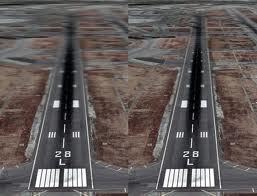Anisotropic Filtering
3D graphics use anisotropic filtering to enhance the image quality of textures on sloped, rendered surfaces. The technique eliminates polygon aliasing, which causes pixelated or jagged polygons in 3D graphics. Additionally, the anisotropic filtering technique reduces the blurring of sloped textures and is the successor to previously used techniques such as bi-linear and tri-linear filtering. It does not change the shape of the polygon to which the texture is applied to achieve these effects. It only modifies the manner in which the textures are mapped and subsequently displayed in the 3D scene view.
How does Anisotropic Filtering Work?
Anisotropic filtering monitors textures at the pixel-level and maps a pattern based on the projected shape of each pixel. Depending on the view angle of a given 3D scene, single pixels contain area that more than a single pixel of texture information uses. As a result, the anisotropic filtering method uses quite a bit of data that is dependent on the texture quality, view angle, and slope of the shape to which the texture is applied. Even though texture caching can reduce the amount of computer memory required for scenes using anisotropic filtering, a number of graphics cards optimize this type of filtering for common angles such as the sky, floors, and walls in games.
When was Anisotropic Filtering Invented?
Anisotropic filtering developed in the mid to late 1990s. Since then, most computer graphics cards have incorporated hardware support for the technique that can be selectively turned on/off, or set to varying degrees of support depending on the user’s preferences. When set to the maximum threshold, the graphics quality is high, but game response may be slow depending on the number of computer resources available to the game. The performance selections are enabled through the technique’s hardware support, which has matured over the early 2000s.
What are the Advantages of Anisotropic Filtering?
The primary advantage of anisotropic filtering is that it significantly improves the realism of 3D shapes when textures are applied. It is most commonly applied on terrain mappings used in driving games and first-person shooters, allowing the end-user to feel a greater sense of immersion in the game or simulated environment. This technique is not significantly used in 3D applications that do not require an extended feeling of “depth.”
What are the Uses of Anisotropic Filtering?
Anisotropic filtering is primarily used in 3D games and simulations that require an extended immersion in the depth of view. In the military, it is used to provide a more realistic view of terrain for flight and combat simulations. In gaming, it is used to make racing and first person shooter games appear more realistic and to add to the overall enjoyment of the games.


Comments - No Responses to “Anisotropic Filtering”
Sorry but comments are closed at this time.